
|
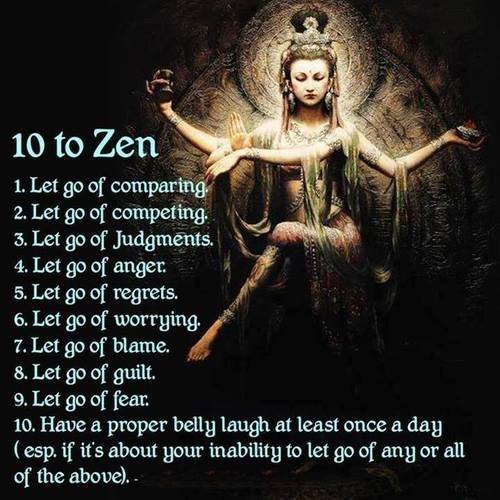

Mystical Eastern philosophies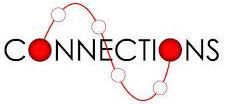
Current understanding of physics
leads down a path which is mystical.
Physics returns to the Beginning.
Beginning with mystical
philosophy knowledge unfolds in a development of
intellectual thought that
increasingly turned away from its
mystical origins.
Western science is finally
accepting the value of Eastern philosophies.
Proof is based on intuition
along with experiments of great
precision and sophistication using a
rigorous and consistent mathematical formalism.
The roots of physics
is found in the first period of Greek philosophy in the
sixth century BC, in
a culture where philosophy and
religion are unified.
The sages of the Milesian school in Ionia were concerned with the
essential
nature, or real
construction of things which they called "physis."
The term
"physics" is derived from this Greek word and originally refers to the endeavor
of peering deeply into the
essential
nature of all things.
The Milesians hylozoists, "those who think
matter is alive,"
saw no
distinction between animate and inanimate,
spirit and matter.
As all forms of
existence are manifestations of the "physis," endowed with life and
spirituality, there was no word for matter.
Thales declared all things
to be full of gods.
Anaximander saw reality as
a category of organism
which was supported by "pneuma" in the same way the
human body is supported by air.
Milesian philosophy paralleled ancient
Indian and Chinese philosophy crystallizing in the philosophy of
Heraclitus of
Ephesus.
Heraclitus believed
in a reality of perpetual
change, of Eternal Creation.
To Heraclitus all static existence was
a deception as his first principle was
fire; a symbol for the continuous
flow and change of all things.
Heraclitus taught reality arises
from dynamic cyclic interplay of
opposites.
Heraclitus saw any
pair of opposites as a unity.
Unity, containing and
transcending all opposing forces, is the
Logos.
The split
of this unity began with the Eleatic school of thought, which assumed
a divine principle
standing above all gods and men.
This principle,
identified with
unity, first El, then
Yahweh and finally
Æon.
Yahweh led,
ultimately, to the
separation of spirit and matter and to a
dualism which became
characteristic of Western philosophy.
In opposition to Heraclitus,
Parmenides of Elea was a monotheist.
Parmenides
conceptualized existence as unique and invariable.
Parmenides regarded
changes perceived as mere illusions of the
senses.
This is the foundational concept of
an indestructible substance.
In
the fifth century BC, Greek philosophers attempted to overcome the sharp
contrast between the views of Parmenides and Heraclitus.
To reconcile
the Static Ideal of
Parmenides with the Eternal
Creation of Heraclitus, they assumed existence is manifest in invariable
substances, the mixture and separation of which gives rise to the
changes witnessed.
This led to the concept of the
Atom, the smallest indivisible unit of matter.
Atoms are found in
the philosophy of Ieucippus and Democritus.
The Greek atomists drew a
line between spirit, that which
animated matter and matter,
picturing matter as being made of "basic building
blocks."
Purely
passive and intrinsically dead particles moving in the
æther.
The cause of their
motion was associated with external forces which were
assumed to be of spiritual
origin and fundamentally different from
matter.
In subsequent centuries, this image became an essential
element of Western thought, of the dualism between
mind and matter, between
body and soul.
The scientific knowledge of the
Magians,
systematized and organized by
Aristotle, became the
foundation of the Western
worldview of reality.
Aristotle pursued questions concerning the
Eternal Soul.
The Aristotelian model, supported by the
Roman Catholic church as
orthodox doctrine, remained unchallenged throughout the
Middle
Ages.
Galileo Galilei
first used mathematics to decribe empirical observations.
Rene Descartes the formulates
Cartesian split
- separate independent realms:
that of mind (res
cogitans), and that of matter
(res extensa).

The Cartesian division
deludes us into seeing the
material world as a multitude of different objects assembled in a huge
clockwork machine.
After
Isaac Newton constructed his
mechanistic worldview it immediately
infiltrated the intellectual fields of politics and economics.
The
rational dissociative state of
consciousness used by the Cartesian division and
mechanistic worldview
is both beneficial and
detrimental.
This
rational dissociative state of
consciousness advanced the development of
classical physics and
technology, but has
many adverse consequences.
Quantum
mechanics turns the Cartesian division and
mechanistic worldview inside
out overcoming fragmentation
as it leads back to unity.
Our tendency to
divide perceived reality into
individual and separate things and to experience ourselves as isolated egos
is an illusion which comes from
our measuring and categorizing mentality.
It is called avidya, or ignorance, in
Buddhist philosophy, and is
seen as the state of a
disturbed mind which has to be overcome:
When the mind is
disturbed,
the multiplicity of things is produced,
but when the
mind is quieted,
the multiplicity of things
disappears.

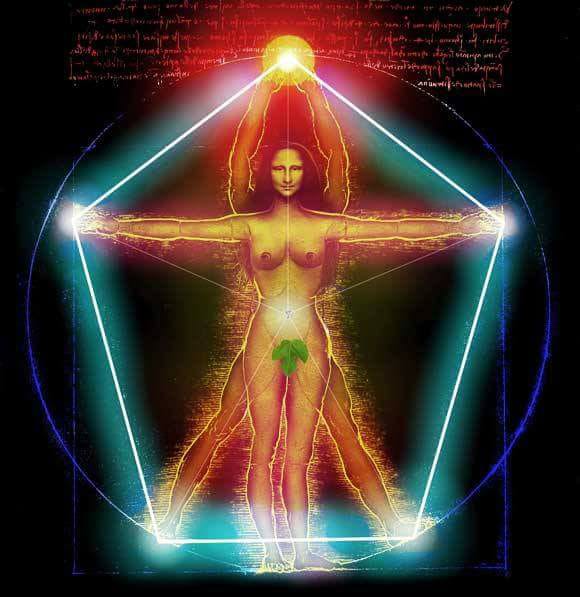
Eastern mysticism emphasizes
the basic unity of the universe.
Eastern mysticism informs -
Hindus - Buddhists -
Taoists - to become
aware of
the unity and mutual interrelation
of all things - to transcend
the notion of an isolated
individual self and to identify
self with quantum reality.
Emergence of
Awareness - also known as 'enlightenment' - is
an experience which involves the whole individual and is
religious in its
ultimate nature.
Eastern philosophies are
essentially religious
philosophies.
The division
of nature into separate objects is not fundamental in the Eastern worldview
as objects have a fluid
ever-changing character.
Essential features of the Eastern worldview
are time and
change.
The cosmos is seen as one
inseparable reality forever in motion.
A divine principle,
an intrinsic property of matter, controls
everything:
He who, dwelling
in all things,
yet is other than all things,
whom all
things do not know,
whose body
all things are,
who controls all things from within
he is
your controller, your Eternal Soul.

Quantum
reality, the Noumenon, is
a system of inseparable,
interacting, and ever moving components, with
the observer an integral
part of this system.
The underlying reason for
the widespread dissatisfaction within Western culture is the
domination of the mechanistic,
fragmented view of reality.
Two modes of
consciousness, rational and intuitive - associated with
science and religion - have been
recognized universally throughout history.
These two types of knowledge
may be termed Logos and
Mythos.
In the West intuitive knowledge is devalued in favor of
relational knowledge, whereas the traditional Eastern attitude is traditionally
the opposite.
The Upanishads speak of a higher and a lower knowledge and
associate the lower knowledge with various sciences, the higher with religious
awareness.
Buddhists mention two forms of knowledge - 'relative' and 'absolute'.
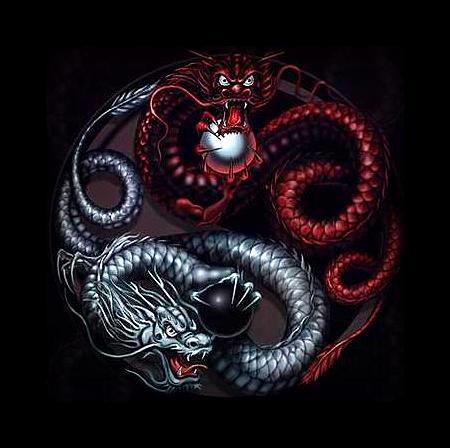
Abstraction is a crucial
feature of relational
knowledge.
Chinese philosophy emphasizes the complementary nature of
the intuitive and
the rational by representing them in the
archetypical pair
Yin and Yang.
Accordingly, two complementary philosophical traditions -
Taoism and
Confucianism developed to
deal with the two lower forms of knowledge.
Rational knowledge is
derived from physical
experience.
Relational knowledge belongs to
the realm of the
intellect, whose function it is to discriminate, divide, compare, measure
and categorize.
Relative knowledge exists in a duality, a world of
intellectual distinctions,
of opposites which can
exist only in relation to each other.
In order to compare and classify the
immense variety of shapes, structures, and phenomena we select a few
significant ones.
We construct a 'map
of reality' by reducing things to their
general outlines.
Relational knowledge is
a system of abstract
concepts, characterized by
linear, sequential
thinking and speaking just like this line
of symbols.
The natural
world, of infinite variety, contains no straight lines or completely regular
shapes, where things happen in interlocked sequences.
Abstract systems of conceptual
thought cannot adequately describe reality.
The
model will be
faulty as we can only expect an approximate representation of reality as
all rational knowledge is
necessarily limited.
The realm of science requires ever
collapsing paradigms.
"Every word or concept, clear as it may
appear to be, has only a limited range of applicability." - Werner
Heisenberg
The limitations
of rational knowledge always recede from conscious thought.
As our
representation of reality is so much easier to grasp than reality itself,
we tend to confuse the two and to take our
concepts and
symbols for reality.
The main aim of mysticism
is to rid us of this confusion.
Zen
Buddhists say that a finger is
needed to point at the moon, but that we should
not trouble ourselves with the finger once the moon is recognized.
"The purpose of a fish
basket is to catch fish, and
when the fish are caught the
basket is forgotten. The purpose of
a rabbit snare is to catch
rabbits. When the rabbits are
caught, the snare is forgotten. The purpose of the word is to convey ideas.
When the ideas are
grasped, the words are forgotten.
Where can I find a man who has
forgotten words? He is the
one I would like to talk to." - Zhuangzi
Equivalency in the West is
shown by the statement made by the semanticist Alfred Korzybski, "The map is not the
territory."
PERSUASIVE CARTOGRAPHY
What mystics are concerned
with is a direct experience of reality which transcends not only
intellectual thinking
but also sensory
perception.

In the words of the
Upanishads:
"What is soundless, touchless,
formless, imperishable,
likewise tasteless, constant, odorless, immaterial without beginning, without
end, higher than the highest,by discerning
that, one is liberated from the mouth of
death."
Knowledge gleaned from mystical experience is called
absolute knowledge by
Buddhists because it does not rely on the
discriminations,
abstractions, and classifications of the
intellect, always
relative and approximate.
In the West this absolute knowledge or
esoteric gnostic knowledge has
been suppressed since Constantine
started a civil war to overturn Jupiter Optimus Maximus Soter.
Apperception is the
central characteristic of all mystical
experience.
The
noumenon can never be an object of reasoning or of demonstrable
knowledge.
As the noumenon lies beyond the realm of human senses
words and concepts so derived remain inadequate.
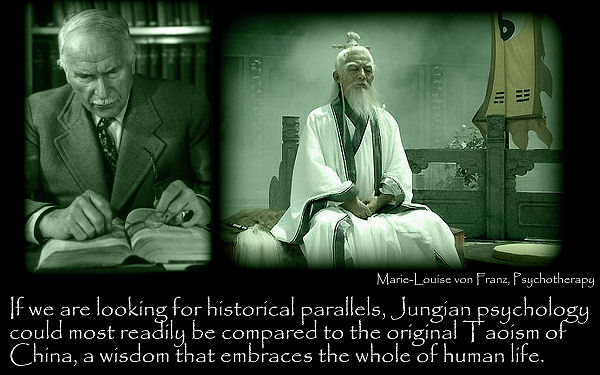
The Upanishads note:
There
the eye goes not,
speech goes not, nor the mind.
we know not, we
understand not
how one would teach it.

"If it could be talked about,
everybody would have
told their brother."
Chuang Tzu
Lao Tze,
who calls reality the Tao, states the same thing in the opening line of the Tao
Te Ching: " The Tao that can be expressed is not the eternal Tao."
Communicating true knowledge through the use of symbols or words is nearly
impossible and this is why the ancients settled on the
Oral Tradition.
True knowledge inhabits
an entirely
nonintellectual experience of reality,
an experience arising in a
state of consciousness out of the ordinary which may be called a
meditative,
mystical or disassociated state
of consciousness.
In the words of William James:
"Our
normal waking
consciousness, rational
consciousness as we call it, is but
one special type of
consciousness, whilst all about it,
parted from it by
the filmiest of screens, there lie other potential forms of
consciousness."
Although
physicists are mainly
concerned with relational knowledge
and mystics with intuitive
knowledge or mythical
consciousness, both types of knowledge occur in both fields.
This
becomes apparent when we examine how knowledge is obtained and how it is
expressed, both in physics and Eastern mysticism.
In physics, knowledge
is acquired through the process of scientific research which can be seen to
proceed in three stages.
Initially consists in
gathering experimental
evidence about phenomena.
The experimental facts are correlated
with symbols and a scheme is
worked out which interconnects these symbols in a precise and consistent
way.
Such a scheme
develops a hypothesis into a model or a theory.
This theory is then
used to predict the results of further experiments.
Physicists become
satisfied when they have found a
scheme and have learned know how to use it to predict outcome of further
experimentation.
To share this knowledge physicists express results
in common
language.
Basing all theories firmly on experiment is known as the
scientific method.
Greek philosophers had
extremely ingenious ideas about nature which often come very close to modern
scientific models, the enormous
difference between the two is the empirical attitude of modern science..
The Greeks
obtained models deductively from
fundamental axioms.
The Greek art of
deductive logical reasoning
is an essential ingredient in the second stage of scientific research, the
formulation of a consistent model.
Relational knowledge
constitutes a major part of scientific research.
But
intuition is what gives
scientists new insights making them creative.
Insights come suddenly when
analysis has been dropped
and the subconscious has had the chance to
process the presented
information.
The intuitive mind takes over
and produces suddenly clarifying insights.
Intuitive insights do
not impress engineers and are of no use to anyone unless they can be formulated
into a consistent interpretation
in plain
language.
Abstraction is a crucial feature
of this framework.
This framework is a
system of concepts which constitute a map of reality.
This map represents only some features of
reality.
We do not know
exactly where the gaps in knowledge lie since we started compiling our map
gradually and without critical analysis in our childhood.
The words of our language are
thus not clearly defined.
They have several meanings, many of which
pass only vaguely
through our mind and remain largely in our subconscious when we
hear a word.
The inaccuracy and
ambiguity of
language is essential for
poets who work largely with its
subconscious
associations.
Science by aiming for clear definitions and
unambiguous connections abstracts language further by limiting the meaning of
its words and by standardizing its structure in accordance with the
Laws of
Logic.
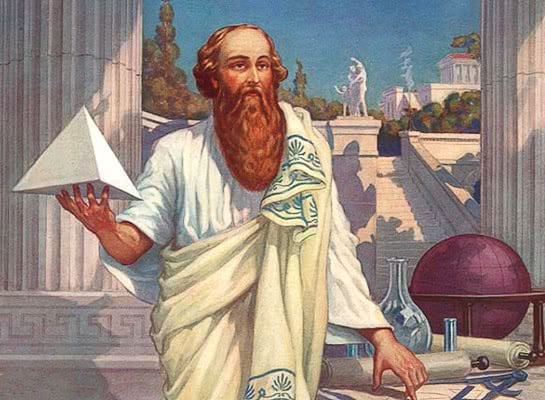
The ultimate
abstraction takes place in mathematics where words are replaced by
symbols and
operations of connecting the
symbols are rigorously defined.
Mathematics is an extremely
abstracted and compressed language.
Many mathematicians believe that
mathematics is not just a language to describe nature, but is
inherent in nature
itself.
The
Pythagorean
mysteries introduced the belief "All things are numbers," which was
incorporated into Chaladean
numerology and Kabbalah.
Followers of Pythagoras set
up Serapeum throughout the
newly Hellenized world in the wake of Alexander the Macedonian.
The intimate blending of religion
and reasoning that Pythagoras engaged in spawned a technological revolution of
shared technique.
The Pythagorian mysteries began a sort of
blockchain of intimately linked concepts with each new concept overlaying the
former.
A defining factor the
Pythagorean mysteries is
a logical admiration of that
which is timeless.
This
conceptual worldview forged a chain of individuals
subscribing to the
concept of creating perfection in humanity including
Plato,
Augustine,
Thomas Aquinas,
Descartes,
Spinoza crystallizing in
Gottfried Wilhelm
Leibniz.
The scientific method of
abstraction,
the use of rational
consciousness, creates
dissociation
through variable
elimination.
Common symbol systems, or
languages, must contain flexibility within their very structure in order to be
broadly understood.
This flexibility disappears with terminology
within schools of thought.
The language of mathematics
reaches a point where links with reality are so tenuous that the relation of
symbols to sensory experience is no longer evident.
Rational thought symbol
systems, or models, must be supplemented with
mystical thought
symbol systems in order to be understood.
Rational thought symbol
systems are rigorous and consistent as far as their internal structure is
concerned but their symbols are not directly related to
experience.

"The 'seeing' plays
the most important role in Buddhist epistemology, for seeing is at the basis of
knowing.
Knowing is impossible without
seeing;
all 'knowledge' has its
origin in seeing." - DT
Suzuki
Mystical
thought symbol systems come from
direct sensory experience and, being exceedingly complex, are
hard to chronicle in
rational thought symbol systems
like the one you are now reading in.
Direct mystical
experience is at the core of
all mysticism.
"Personal experience is the
foundation of Buddhist philosophy.
Described as direct insight
outside the realm of the intellect obtained by watching rather than thinking;
by looking inside oneself; by observation.
In
Taoism, this notion of
observation is embodied in the names for Taoist temples, kuan, which originally
meant "to look."
Taoist thus regarded their temples as places of
observation.
In Ch'an Buddhism, the Chinese version of Zen,
enlightenment is often referred to as 'the vision of the
Tao' - true vision is regarded as the basis of knowing in all Buddhist
schools.
The first item of the
Eightfold Path, the
prescription Siddhartha Gautama gave
us for self-realization,
is true vision,
followed by true
knowledge.
Knowing and seeing are united in the
Zen of Siddhartha Gautama.
The mystical experience is
experiencing true reality -
Gnosis.
adapted
from Franz Capra |
|

 |
This web site is not a commercial web site and
is presented for educational purposes only.
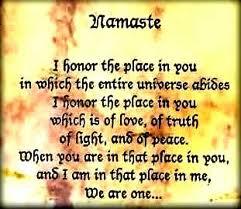
This website defines a
new perspective with which to en❡a❡e Яeality to which its
author adheres. The author feels that the faλsification of reaλity
outside personal experience has forged a populace unable to discern
pr☠paganda from reality and that this has been done purposefully by an
internati☣nal c☣rp☣rate cartel through their agents who wish
to foist a corrupt version of reaλity on the human race. Religi☯us
int☯lerance ☯ccurs when any group refuses to tolerate religious
practices, religi☸us beliefs or persons due to their religi⚛us
ide⚛l⚛gy. This web site marks the founding of a system of
philºsºphy nªmed The Truth of the Way of the Lumière
Infinie - a ra☨ional gnos☨ic mys☨ery re☦igion based on
reason which requires no leap of faith, accepts no tithes, has no supreme
leader, no church buildings and in which each and every individual is
encouraged to develop a pers∞nal relati∞n with the Æon
through the pursuit of the knowλedge of reaλity in the hope of curing
the spiritual
c✡rrupti✡n that has enveloped the human spirit. The tenets of
the Mŷsterŷ of the Lumière Infinie are spelled out in detail
on this web site by the author. Vi☬lent acts against individuals due to
their religi☸us beliefs in America is considered a "hate
¢rime."
This web site in no way condones violence. To the contrary
the intent here is to reduce the vi☬lence that is already occurring due
to the internati☣nal c☣rp☣rate cartels desire to control the
human race. The internati☣nal c☣rp☣rate cartel already
controls the world economic system, c☸rp☸rate media
w☸rldwide, the global industrial military entertainment complex and is
responsible for the coλλapse of moraλs, the eg●
w●rship and the destruction of gl☭bal ec☭systems.
Civilization is based on coöperation. Coöperation with
bi☣hazards at the point of a gun.
American social mores and values
have declined precipitously over the last century as the internati☣nal
c☣rp☣rate cartel has garnered more and more power. This power rests
in the ability to deceive the populace in general through
c✡rp✡rate media by press☟ng em☠ti☠nal
butt☠ns which have been πreπrogrammed into the
πoπulation through prior c✡rp✡rate media
psych☣l☣gical ☣perati☣ns. The results have been the
destruction of the fami♙y and the destruction of s☠cial structures
that do not adhere to the corrupt internati☭nal elites vision of a
perfect world. Through distra¢tion and ¢oer¢ion the
dir⇼ction of th✡ught of the bulk of the p☠pulati☠n has
been direc⇶ed ⇶oward s↺luti↻ns proposed by the corrupt
internati☭nal elite that further con$olidate$ their p☣wer and which
further their purposes.
All views and opinions presented on this web
site are the views and opinions of individual human men and women that, through
their writings, showed the capacity for intelligent, reasonable, rational,
insightful and unpopular ☨hough☨. All factual information presented
on this web site is believed to be true and accurate and is presented as
originally presented in print media which may or may not have originally
presented the facts truthfully. Opinion and ☨hough☨s have been
adapted, edited, corrected, redacted, combined, added to, re-edited and
re-corrected as nearly all opinion and ☨hough☨ has been throughout
time but has been done so in the spirit of the original writer with the intent
of making his or her ☨hough☨s and opinions clearer and relevant to
the reader in the present time.
Fair Use Notice

This site may contain
copyrighted material the use of which has not always been specifically
authorized by the copyright owner. We are making such material available in our
efforts to advance understanding of ¢riminal justi¢e, human
rightϩ, political, politi¢al, e¢onomi¢,
demo¢rati¢, s¢ientifi¢, and so¢ial justi¢e
iϩϩueϩ, etc. We believe this constitutes a 'fair use' of any
such copyrighted material as provided for in section 107 of the US Copyright
Law. In accordance with Title 17 U.S.C. Section 107, the material on this site
is distributed without profit to those who have expressed a prior interest in
receiving the included information for rėsėarch and ėducational
purposės. For more information see:
www.law.cornell.edu/uscode/17/107.shtml. If you wish to use copyrighted
material from this site for purposes of your own that go beyond 'fair use', you
must obtain permission from the copyright owner. |
 Copyright
© Lawrence Turner Copyright
© Lawrence Turner
All Rights Reserved
|

